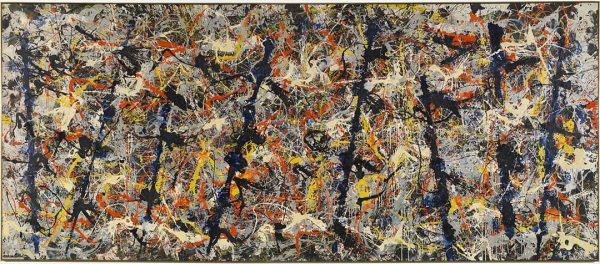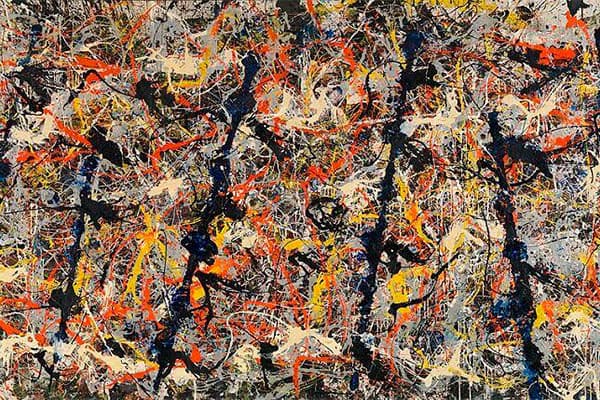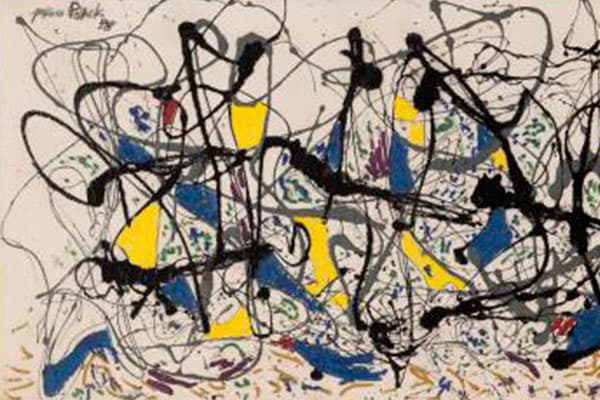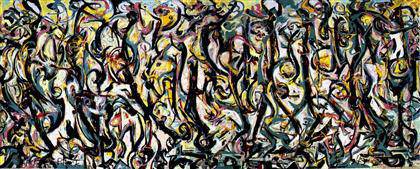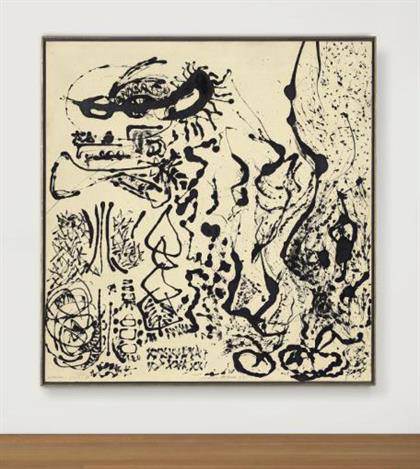Jackson Pollock
“Abstract painting is abstract. It confronts you. There was a reviewer a while back who wrote that my pictures didn’t have any beginning or any end. He didn’t mean it as a compliment, but it was. It was a fine compliment. Only he didn’t know it”
Jackson Pollock
Jackson Pollock (1912-1956) was the leading figure of Abstract Expressionism, and a painter who, both during his lifetime and after his death, has provoked the most intense admiration and the harshest criticism. At his artistic peak, he voluntarily abandoned the style that made him “the most important living painter in America” (as “Life” magazine described him), in what many considered a betrayal of his artistic ideals. To add further fuel to his mystique, he died in a traffic accident, driving under the influence of alcohol, at the age of 44.
Image: Unknown: “Portrait of Jackson Pollock”, 1928.
As in the case of other “cursed” painters, such as Caravaggio or Modigliani, the figure of Pollock is fascinating for reasons that sometimes go beyond the purely artistic. In addition to his well-known alcoholism, which, as already mentioned, eventually led to his fatal accident, some historians add the possibility that he suffered from bipolar disorder. Famously, one evening the artist ended up urinating in the fireplace of Peggy Guggenheim’s living room. In his work, the most important of his output, that for which he deserves to be remembered as one of the great figures of twentieth-century art, is concentrated in a period of just four years. But, during this brief but intense heyday, his artistic influence was extraordinary, being “like a meteor from which everyone kept a respectful distance. He seemed to have discouraged in advance all his possible direct imitators” (Pierre Restany, “Abstract Expressionism”, 1984). Pollock, the meteor of Abstract Expressionism, abruptly burst into 20th century art, causing a brief but intense explosion, and disappeared, leaving an indelible mark on the art of the decades that followed.
Paul Jackson Pollock was born in Wyoming, but he grew up in Arizona and California. The influence of Native American culture and Mexican muralists is notable in his pre-1945 works, such as “Birth” (1941) at the Tate Modern, or “Mural” (1943) at the University of Iowa Museum of Art, possibly his most outstanding painting from this period. In 1945, Pollock married fellow painter Lee Krasner (1908-1984).
Between 1947 and 1950 the art world witnessed Pollock’s “drip” period, in which, pouring paint directly from the can onto the canvas -usually laid out on the floor- Pollock created works of impressive strength such as “Lucifer” (1947, Seattle Art Museum) or “Summertime: Number 9A” (1948, Tate Modern), concluding in 1950 with two extraordinary works: “Autumn Rhythm (Number 30)“, from the Metropolitan Museum, and “Number 1: Lavender Mist“, from the National Gallery, Washington. Pollock himself described his creative process in these words:
“My painting does not come from the easel. I prefer to tack the unstretched canvas to the hard wall or the floor. I need the resistance of a hard surface. On the floor I am more at ease. I feel nearer, more part of the painting, since this way I can walk around it, work from the four sides and literally be in the painting.”
Jackson Pollock: “Autumn Rhythm (Number 30)”, 1948– Enamel on canvas, 266.7 × 525.8 cm – Metropolitan Museum of Art, New York. ·· Jackson Pollock: “Blue Poles”, 1952 – Enamel on canvas, 210 x 486 cm. – National Gallery of Australia, Canberra. All images: © Artists Rights Society (ARS), New York
Pollock was almost certainly inspired by the Ukrainian American artist Janet Sobel, who was already using this technique in the mid-1940s. After this brief but intense period, Pollock abandoned the “drip”, and his later works lack the interest of his earlier ones, with notable exceptions such as “Blue Poles” (1952, National Gallery of Australia). Today, Pollock is one of the most coveted artists on the art market, and his “Number 5, 1948” was for some time the most expensive painting ever sold, having been acquired by a private collector for $140 million in 2006.
G. Fernández · theartwolf.com
Masterworks by Pollock
More about Jackson Pollock
Follow us on:



